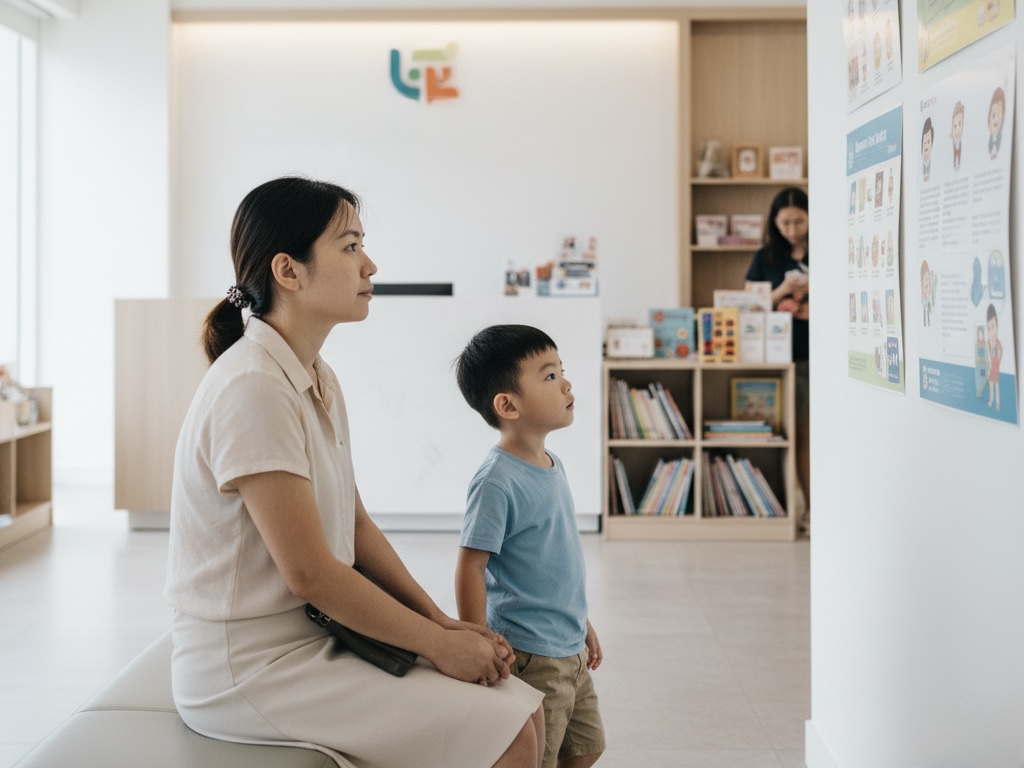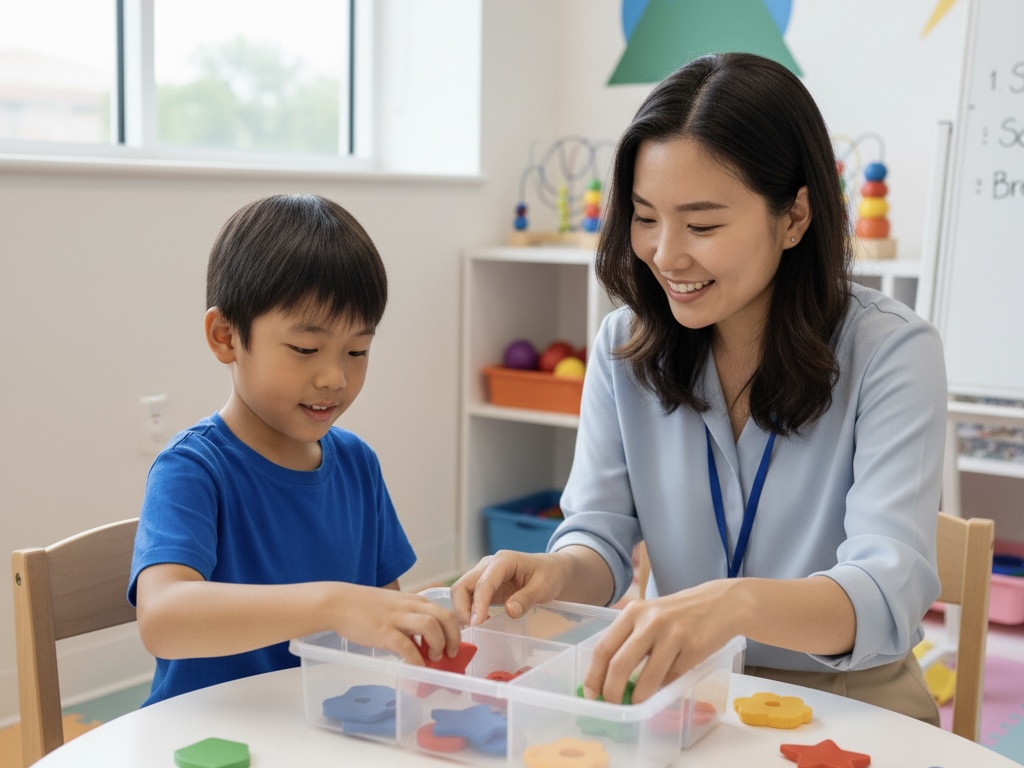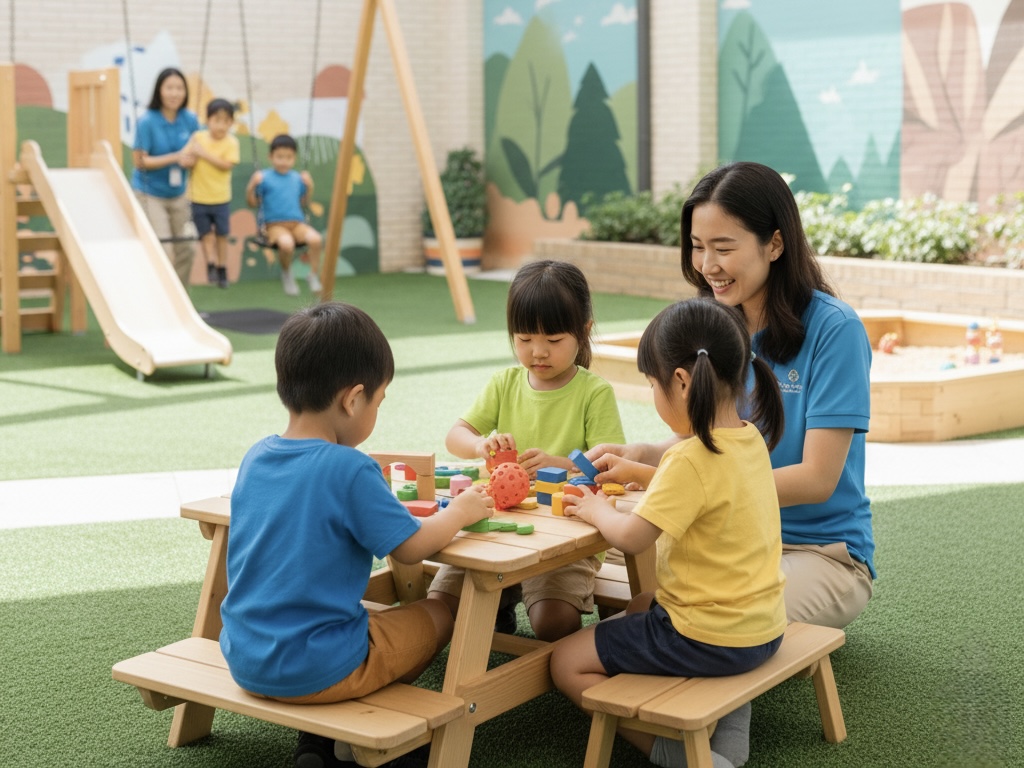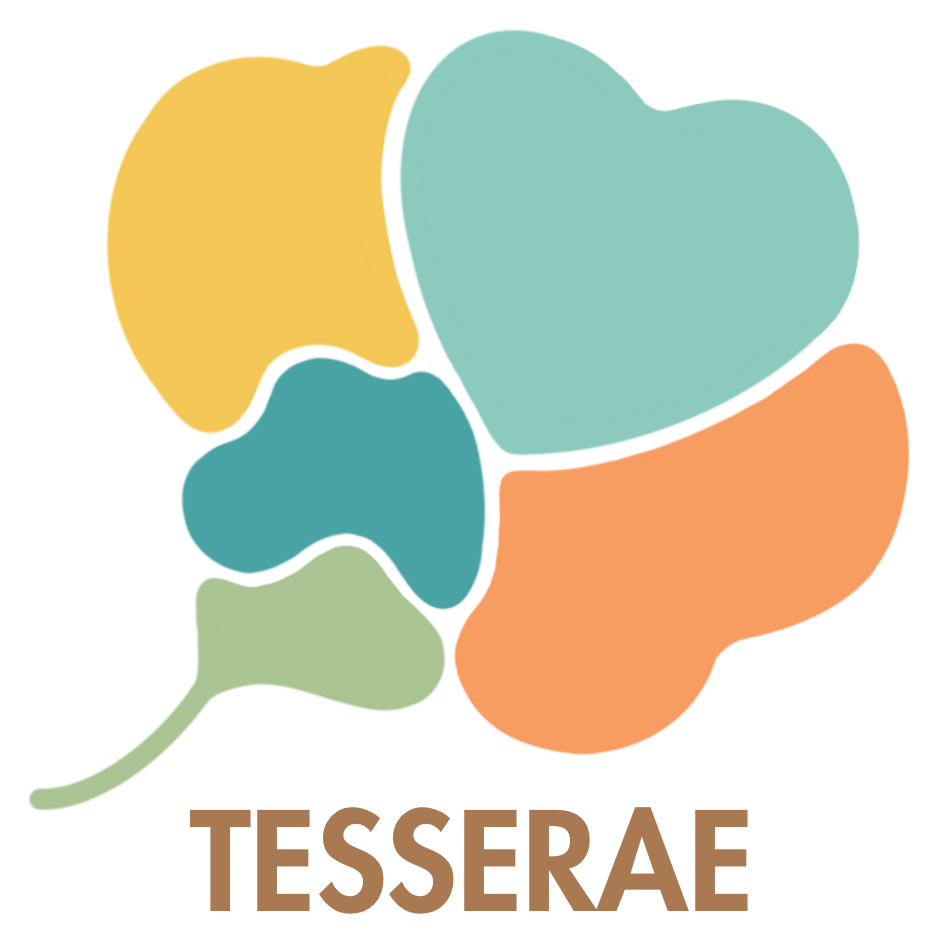You’ve submitted your application to the Autism Resource Centre (ARC) Singapore, and now you’re facing the uncertainty of the waiting period. Every parent wants the best support for their child, and ARC Singapore is known for their comprehensive autism services. However, the waiting period doesn’t mean putting your child’s development on hold.
At Tesserae, we specialise in collaborative ABA therapy and understand the challenges families face during this waiting period. We’re here to help you understand the next steps for your child and explore the various pathways available whilst you wait. This guide will equip you with practical strategies, alternative options, and resources to ensure your child continues receiving quality support during this interim period.
Understanding Singapore's Autism Resource Centre
The Autism Resource Centre (Singapore) is a non-profit organisation that provides comprehensive, lifespan-focused support for individuals on the autism spectrum. ARC offers a range of services from early intervention and education to employment training and family support. It also operates Pathlight School, a first-of-its-kind autism-focused school in Singapore.
The comprehensive services at ARC include:
- Early intervention services for young children aged 2-6 with autism
- Pathlight School which provides both the national curriculum and life-readiness skills for students aged 7-18 with autism
- The Employability and Employment Centre (E2C) that helps adults with autism find jobs through placement and workplace training
Alongside their core services, ARC also maintains:
- Library and Information Services that provide resources and information on autism for families and professionals
- An Autism Training and Consultancy division that offers professional development and training courses for caregivers and educators
- Student Enrichment programmes provide activities to help students with autism develop new interests and skills, complemented by advocacy and awareness work to increase understanding and acceptance of autism in the community.

Other Key Autism Support Organisations
Besides ARC, several other organisations in Singapore provide specialised services for individuals with autism. For example, the Autism Association (Singapore) (AA(S)) operates Eden Centres that include schools for children, day activity centres for adults, and centres focusing on skills development, community living, and recreation. Their mission centres on maximising the potential of individuals with autism and helping them lead meaningful lives.
St. Andrew’s Autism Centre (SAAC) provides a special education school, day activity centres, and Singapore’s first residential facility designed for adults with autism. Their goal focuses on enabling individuals with autism to lead dignified and meaningful lives through comprehensive support services.
AWWA also plays a key role in supporting individuals with autism through its School for Children with Autism (SPED school), early intervention services, and adult disability programmes. Their approach emphasises inclusive education, family-centred support, and community integration, helping children and adults with autism develop essential life skills and thrive in society.
Understanding the Wait for Autism Resource Centre
Most families experience waiting periods for two main ARC services: Early Intervention programmes for children under 7 years old, and Pathlight School admissions for children aged 7-18 years. Typical waiting times range from 6-18 months depending on your child’s age, specific needs, and programme availability. This timeframe reflects the high demand for quality autism services in Singapore and the centre’s commitment to maintaining optimal support ratios.
Waiting for Early Intervention Support (Under 7 Years Old) at the Autism Resource Centre?
If your child is under 7 years old, you’re likely waiting for ARC’s Early Intervention Programme. During this critical developmental period, numerous alternative pathways can provide excellent support whilst maintaining your child’s progress.

Understanding EIPIC: Your Primary Alternative
EIPIC (Early Intervention Programme for Infants & Children) serves as Singapore’s government-subsidised backbone for early autism support. Operating across multiple centres island-wide, EIPIC provides comprehensive intervention for children aged 0-6 years through a multidisciplinary approach that includes speech therapy for communication development, occupational therapy for sensory and motor skills, physiotherapy for gross motor development, and special education services.
The programme typically offers 2-3 sessions per week in group settings, making it more affordable than private options due to government subsidies. Key EIPIC providers include Thye Hua Kwan centres across multiple locations, AWWA centres offering comprehensive early intervention services, SPD (Society for the Physically Disabled) centres providing specialised motor development support, and various Community Development Council centres that offer neighbourhood-based accessibility.
The most strategic action you can take is to apply to another EIPIC centre first, while putting your child on waitlist for ARC, as this provides continuous government-subsidised support. This dual approach ensures your child receives immediate intervention whilst maintaining their position for specialised ARC services.
Choosing the Right Therapy Based on Your Child's Priorities
EIPIC programmes are primarily group-based, focusing on broad developmental goals within a classroom-like setting. While valuable, they may not always address every child’s individual needs in depth.
This is why 1-1 therapy can be highly relevant – both during the waiting period before starting EIPIC and even after enrolment – to provide targeted support in specific areas where your child requires more intensive attention.
Deciding on the right balance of group and individual therapy involves understanding your child’s unique profile and prioritising the developmental areas that need the most focus.
Here are some common types of therapy:
Applied Behaviour Analysis (ABA)
Best Suited For: Children needing structure, behaviour modification, and systematic skill building
Primary Focus Areas: Breaking down complex skills, positive reinforcement, functional communication, social interaction, daily living skills
Consider as Priority If: Significant challenging behaviours, learns best with clear structure, needs intensive intervention
Note: 1-1 ABA therapy is rarely available at EIPIC centres
Speech and Language Therapy
Best Suited For: Children with communication difficulties
Primary Focus Areas: Verbal and non-verbal communication, language understanding, social communication, alternative communication methods
Consider as Priority If: Non-speaking or limited speech, communication frustration, strong cognitive abilities with communication barriers
Occupational Therapy
Best Suited For: Children with sensory processing or motor difficulties
Primary Focus Areas: Sensory integration, fine motor skills, self-care and independence, attention and focus, motor planning
Consider as Priority If: Significant sensory sensitivities, fine motor delays, self-care difficulties, sensory-related challenging behaviours
Social Skills Programmes
Best Suited For: Children needing peer interaction and emotional regulation
Primary Focus Areas: Structured social interactions, emotional regulation, play skills, group participation
Consider as Priority If: Basic communication present but social struggles, interest in peers without interaction skills, needs inclusive peer interactions
Making Strategic Decisions: Balancing EIPIC and Therapy
The process of selecting appropriate interventions requires a systematic approach. First, identify your child’s most critical need: communication difficulties suggest prioritising Speech Therapy or ABA with communication focus, significant challenging behaviours indicate ABA for behaviour modification, sensory processing issues affecting daily life point toward Occupational Therapy, and social isolation with basic communication present suggests Social Skills programmes.
Next, consider intensity requirements based on your child’s needs. High-intensity needs, including significant delays or challenging behaviours, may benefit from private ABA or therapy services for more hours. Moderate needs often respond well to EIPIC combined with one targeted private therapy. Mild delays with specific focus areas typically do well with EIPIC supplemented by occasional private consultation.
For practical implementation, start with EIPIC as your foundation since it provides government-subsidised, comprehensive support. Add private therapy in your child’s priority area for additional intensity, implement home strategies based on professional recommendations, and join social groups appropriate for your child’s developmental level.
Want to understand if your child will benefit from ABA therapy while waiting for your spot at ARC?
Waiting for School-Age Support (7+ Years Old) at Pathlight School?

If your child is 7 years or older, you’re likely waiting for admission to Pathlight School. During this waiting period, ensuring continuous educational support becomes crucial for maintaining academic and social progress.
Critical Pathlight School Policy
Understanding Pathlight School’s waiting list policy is essential for strategic planning. A child can only remain on Pathlight’s waiting list if they’re already enrolled in another government-funded Special Education (SPED) school for the same primary diagnosed condition. This policy ensures continuous educational support and fair access management across all families seeking placement.
The strategic implications mean you must secure placement at another SPED school first to maintain your Pathlight application. This approach ensures your child’s education continues uninterrupted during the wait, provides a safety net ensuring no child is left without educational support, and manages demand fairly across all families. Rather than viewing this as a complication, consider it an opportunity to explore quality alternative educational options that might prove excellent matches for your child’s needs.
Alternative School Options While You Wait
- Eden School, operated by the Autism Association Singapore, serves children aged 7-18 years with autism spectrum disorders through a focus on communication skills, social interaction, and functional life skills.
- St. Andrew’s Autism Centre (SAAC) School Programme provides comprehensive education for children aged 7-18 years, emphasising academic learning alongside social skills development. The programme includes independent living preparation and vocational skills, with day activity centres for older students transitioning to adulthood.
- MINDS Schools operate across multiple locations in Singapore, serving children with various special needs through an inclusive approach that welcomes children with autism. These schools may have more immediate availability than autism-specific schools and offer different programme intensities based on individual needs.
- ACS (Academy) serves students diagnosed with Autism Spectrum Disorder (ASD) who have no intellectual impairment and can access the National Curriculum (NC), or what is known as the ASD-NC student profile. It is the newest addition to Singapore’s landscape of SPED schools, and is open for admissions in 2026.
- Mainstream Schools with Learning Support Programmes (LSP) suit children with mild autism who can cope with modified mainstream curricula whilst receiving additional support. This option provides inclusion opportunities and maintains access to mainstream academic standards whilst offering social integration with neurotypical peers.
Maintaining Educational and Social Progress During the Wait
Academic continuity requires immediate action to secure SPED school placement for maintaining Pathlight eligibility, working closely with the current school to understand their approach and curriculum, supplementing with targeted support in areas of strength and interest, and maintaining detailed progress records for eventual Pathlight assessment.
Even after your child is enrolled in ARC, Pathlight, or Eden School, complementary therapy services are beneficial.
While these institutions provide a structured academic curriculum and support, they typically do not offer intensive one-on-one therapy, such as Applied Behaviour Analysis (ABA). One-on-one sessions can be invaluable for addressing skills not explicitly covered within the school’s syllabus.
This targeted, individualised support can help to boost specific skills and provide additional practice, much like having a personal tutor. This complementary approach can accelerate your child’s skill growth and ensure they continue to thrive both inside and outside the classroom.
Accessing Support during Waiting Periods for ARC
Remember, waiting for a spot at the Autism Resource Centre or Pathlight doesn’t mean pausing your child’s development. Singapore’s autism support landscape offers numerous pathways that can provide excellent intervention during this interim period.
Your proactive engagement during this time establishes strong foundations that benefit your child regardless of which programme ultimately provides their formal services.
Speak to us today to understand how we can support your child’s development during this period.
Disclaimer: This information is for educational purposes only and should not replace professional medical advice. Always consult with qualified healthcare professionals regarding your child’s specific needs and development.
Content
Book a free discovery call with us
